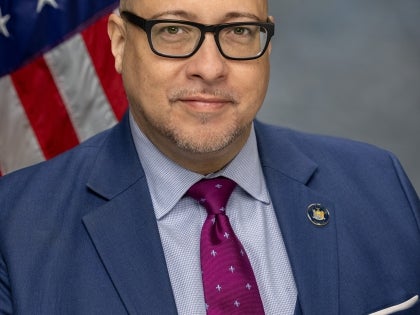
Senator's Rivera Testimony For Attorney General James' Public Hearing on New York's Mental Health Crisis
June 22, 2022
Thank you Attorney General James for organizing a hearing on an important topic, the Mental Health Crisis in New York State. I’m honored to join stakeholders and members of the community for an opportunity to discuss mental health services being provided in New York State. Public understanding of mental health issues and the care available to those in need of support continues to evolve as more knowledge is gained in the field, but there is much work to be done. Individuals and families facing mental health issues still confront barriers to their care.
The pandemic left a lingering miasma of mental strain on all of us. Together we’ve faced great uncertainty, economic disruption, illness, and death. This has taken a toll on our collective psyche and the result is an increased need for these services by the public at large. On the bright side, our society is becoming more aware of our mental wellness and more open to treatment for mental health issues, when previously it was regarded by some as a taboo subject. I am encouraged that conversations around mental health are becoming less stigmatized.
Due to the increased awareness, more people are seeking mental health care. Access is one of the most fundamental barriers that those seeking mental health services face. Issues related to accessing care can be broken into two main categories: availability of the services by providers and an individual’s ability to obtain those services.
First, providers are facing three main challenges: increased demand; workforce shortages; and reimbursement challenges. While many individuals may not yet be receiving treatment for a diagnosed mental illness, more are tapping into a system of providers that was already limited and is now facing increased general demand. Without a corresponding increase in availability and sustainability of services, we’re seeing the increased strain on the provider community and reduced availability for those individuals seeking treatment for mental health issues.
That brings us to workforce challenges. Projections by the US Census Bureau estimate that our country will see growth in the population over 65 years old for the next 30 years. They’re estimating an additional 17 million seniors this decade alone. An increasingly aging population will result in broad and sweeping implications for workforce issues generally and will almost certainly impact the number of mental health providers that are available to deliver services in the future. While the number of providers is likely to decrease, the demand for mental health services will continue to rise as retired workers still need access to these critical services. On top of this, the recent increased strain being placed on providers has created burnout and led people to seek retirement earlier than anticipated or to seek a career change, which has further exacerbated the workforce crisis in the mental health and health care provider community.
We have worked to build capacity and create pipelines for careers in the mental health and health job market. We should continue to build that capacity as quickly as possible to address the needs of our residents. A successful model that we have used previously is providing scholarships to individuals in exchange for the new professionals offering their services to underserved communities in our state.
The third topic on the provider side that has an impact on access is reimbursement. In my time as Chair of the Senate’s Health Committee, I’ve seen the impact that historic underinvestment in mental health care has on our communities, particularly communities of color like those I represent in the Bronx. With many individuals and families receiving health insurance provided by employment, the catastrophic loss of jobs during the pandemic meant that they also lost health coverage. Many individuals turned to Medicaid as a coverage option. The experiences during the pandemic have been a telling example of the perils of having a coverage system that is driven by employer-provided health care. Now, about one in three New Yorkers rely on the Medicaid program, so our state must ensure we have a budget that serves those patients and their providers.
The Medicaid budget has been artificially constrained by the ‘Medicaid Global Cap.’ This cap is a limitation on overall Medicaid spending growth based on metrics that, up until this past budget, did not even include adjustments for increased enrollment. When the former governor enacted the cap, he created a system with predictable outcomes in spending that ignored enrollment growth, service needs, and created artificial pressure on the system. This means he was consistently proposing reducing or cutting Medicaid coverage of necessary medical services or reduced reimbursement to providers. I fight hard during budget negotiations to defend Medicaid and fight cuts to this critical program.
Prior to this year, Medicaid rates were reduced to the “lowest accurately appropriate rates possible,” a fancy way of saying the bare minimum. I don’t, nor should my fellow New Yorkers, accept this as an appropriate way to govern. These rates didn’t account for unanticipated costs or shocks to the health care system, which we’ve seen plenty of in the past few years. They also create stagnation in the industry, which prohibits the exploration of creative solutions to address systemic issues. This past year, we saw Governor Hochul’s first budget begin to address this historic disinvestment through amendments to the artificial Medicaid global cap that I fought for to factor in enrollment growth. I want to make clear that I am supportive of eliminating the cap entirely and carry legislation to do so.
We need to address how reimbursement rates impact providers. This past budget cycle we finally made historic investments in Medicaid rates, as opposed to a decade of disinvestment and austerity for critical services. Governor Hochul’s enacted budget increased the majority of Medicaid expenditures by 1% and undid some of the previous cuts to the program. While this is a positive change, I am hopeful to see continued and increased investments in Medicaid in future budgets. Many facilities and providers offset losses associated with care for Medicaid recipients and those without coverage by private insurance rates or other subsidy programs. This leaves providers like safety net hospitals, who serve our most vulnerable residents with the least access to mental health care, at particular risk due to their large volume of Medicaid and low-income patients. Providers and their advocates have specifically reached out to me to express concerns as it relates to inpatient psychiatric reimbursement rates for hospitals. Governor Hochul, to her credit, increased funding in February by $27.5M to address this specific issue. However, it should be pointed out that this increase was in the Medicaid fee-for-service space and the majority of inpatient psychiatric services delivered by hospitals are provided through the Medicaid managed care program. While we are finally beginning to right the ship as it comes to Medicaid spending, it is moving slowly and there are years worth of underinvestment that need to be addressed. We should build on this momentum and continue New York’s investments in Medicaid.
While providers grapple with challenges in reimbursement, New Yorkers are struggling with access to mental health services due to limited access to coverage. Even New Yorkers who do have insurance find limitations in their coverage for mental health services. Restricted networks, cost-sharing requirements, and benefit limitations are all ways that I have seen residents of New York struggle to get the services they need. These issues are not simply about a sufficient number of providers for the enrollees of a plan. If an individual lives in a service desert, they may have to travel long distances for services, creating disruptions at home and work and causing individuals to put off seeking care. One of the silver linings to the pandemic is the expansion of telehealth services, which allow an individual to receive mental health and health services where it is most convenient. This past budget included provisions increasing parity for telehealth services. However, telehealth services for mental health issues have lagged behind. I have legislation that would create uniform parity for telehealth services to help providers offer and expand this accessible form of care. Whilen telehealth is not a silver bullet to address the access issue for individuals, and should not be used in all instances, many providers in the Bronx have expressed to me the benefits they’ve seen for their patients who can receive care without traveling, arranging child care, or leaving the comfort of their homes.
Finally, we must address systemic inequities in care for all residents of our state. Studies have shown that minority populations are less likely to receive care for their mental health issues than their counterparts. One of my bills, which both the Senate and Assembly passed and will be delivered to the Governor later this year, expands duties of and renames the Office of Minority Health to the Office of Health Equity. This office would be tasked with promoting social determinants of health to help New Yorkers thrive and to alleviate strains across the system that compound the struggles of individuals with mental health issues. Additionally, it would task the office with advancing measures to promote equity among all populations, including those that have experienced socioeconomic and systemic disadvantages. Fundamentally, all of our communities are strengthened by ensuring and promoting the wellbeing of all New Yorkers.
Thank you for the opportunity to testify today. I know that I am not working alone to address the mental health crisis in our state and I want every New Yorker to know that they are not alone when it comes to taking care of our mental health. I look forward to working with the Attorney General’s office, my colleagues, and stakeholders on addressing past shortcomings and building on recent successes to improve the delivery of mental health services in New York.
